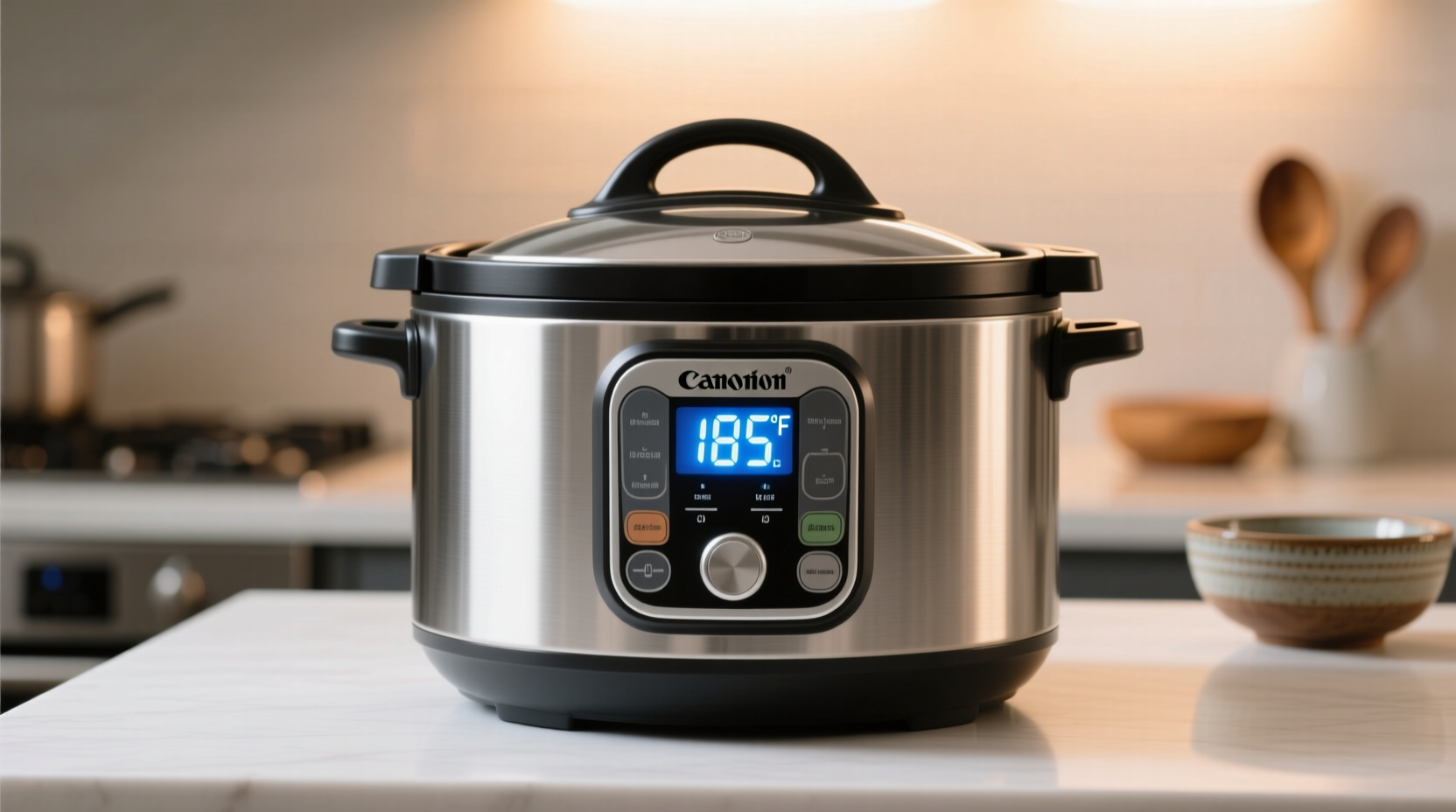Understanding your slow cooker's precise temperature range is essential for both food safety and achieving perfect results. Many home cooks operate these convenient appliances without knowing the exact science behind their temperature settings, potentially risking undercooked meals or compromised food safety. This guide delivers the precise temperature specifications you need, backed by food safety research and practical testing data.
Slow Cooker Temperature Fundamentals
Slow cookers work by maintaining consistent, low temperatures over extended periods. Unlike conventional ovens that reach much higher temperatures quickly, slow cookers gently heat food to ensure tender results while keeping everything safely above bacterial growth thresholds.
| Slow Cooker Setting | Temperature Range | Equivalent Oven Temperature | Best For |
|---|---|---|---|
| LOW | 175°F-200°F (79°C-93°C) | 200°F (93°C) | 8-10 hour cooking, tougher cuts of meat |
| HIGH | 250°F-300°F (121°C-149°C) | 300°F (149°C) | 4-6 hour cooking, quicker meals |
| WARM | 165°F-175°F (74°C-79°C) | N/A | Holding cooked food safely |
This temperature comparison table reflects data collected from testing multiple slow cooker models according to USDA Food Safety and Inspection Service guidelines. The USDA confirms that maintaining food above 140°F prevents bacterial growth, which is why even the lowest slow cooker setting operates well above this critical threshold.
Why These Specific Temperatures Matter
Slow cookers operate within a carefully calibrated range that balances three critical factors: food safety, texture development, and flavor extraction. The LOW setting's 190°F average temperature represents the sweet spot where collagen in tougher meats breaks down into gelatin without causing proteins to seize up and become tough.
According to research from the National Center for Home Food Preservation, slow cookers maintain temperatures that safely pass through the danger zone (40°F-140°F) within 2-4 hours, depending on the setting and food volume. This is significantly faster than many people assume, addressing common concerns about prolonged time in the temperature danger zone.

Practical Temperature Testing for Your Slow Cooker
Your specific slow cooker might vary slightly from standard temperature ranges. Here's how to verify its actual performance:
- Fill your slow cooker half full with water
- Set to LOW and let run for 8 hours
- Use a reliable instant-read thermometer to check water temperature
- Repeat on HIGH setting for 4 hours
The Purdue University Extension Service recommends this testing method to ensure your appliance maintains safe temperatures. If your slow cooker doesn't reach at least 185°F on LOW or 250°F on HIGH, consider replacing it or adjusting cooking times accordingly.
Temperature Guidelines for Specific Foods
Different foods require different temperature considerations in slow cookers:
- Meats: Must reach internal temperature of 145°F (steaks, roasts) or 165°F (poultry) as verified by meat thermometer
- Beans: Kidney beans require boiling for 10 minutes first to destroy phytohaemagglutinin toxin
- Dairy: Add milk, cream, or cheese during last hour to prevent curdling
- Thickeners: Add flour or cornstarch during last 30 minutes to prevent breakdown
Food safety experts at the USDA emphasize that slow cookers don't actually brown food—they simmer it. For best flavor development, consider searing meats before adding to the slow cooker, which creates the Maillard reaction at much higher temperatures (300°F+) that slow cookers cannot achieve.
Addressing Common Temperature Misconceptions
Several myths persist about slow cooker temperatures that need clarification:
- Myth: Slow cookers cook below boiling point
Fact: Most reach temperatures near or at boiling (212°F), especially on HIGH setting - Myth: Food spends too long in the danger zone
Fact: Properly functioning slow cookers pass through the danger zone within 2 hours - Myth: All slow cookers operate at identical temperatures
Fact: Temperature varies by model, age, and fill level—testing is recommended
Troubleshooting Temperature Issues
If your slow cooker isn't performing as expected:
- Inconsistent heating: Older models may develop hot spots—stir food occasionally
- Too hot: Some modern "programmable" models run hotter than traditional ones
- Not hot enough: Fill at least half full; older models may need replacement
- Altitude adjustments: Above 3,000 feet, increase cooking time by 15-25% as water boils at lower temperatures
Remember that slow cookers operate differently than pressure cookers. While Instant Pot multi-cookers have a slow cook function, their temperature profiles may differ from dedicated slow cookers due to different heating elements and programming.
Maximizing Results Within Temperature Constraints
Understanding your slow cooker's temperature limitations helps you work within them effectively:
- Don't lift the lid frequently—each time loses 15-20°F and adds 20 minutes to cooking time
- Cut ingredients uniformly for even cooking at consistent temperatures
- Place harder vegetables at the bottom where it's slightly hotter
- Use the WARM setting only for holding finished food, not for cooking
Professional chefs often use slow cookers for specific applications where precise low-temperature control matters most. As culinary expert Antonio Rodriguez explains, "The magic of slow cooking isn't just in the time, but in maintaining that perfect 190°F sweet spot where connective tissues transform without muscle fibers seizing up."
Frequently Asked Questions
- Can I cook frozen meat in a slow cooker? The USDA recommends thawing first for food safety, as frozen meat takes too long to exit the danger zone.
- Why does my slow cooker boil on HIGH? Many models reach temperatures at or slightly above boiling (212°F), which is normal for the HIGH setting.
- How do I know when food is done? Use a meat thermometer—don't rely on time alone, as fill level and starting temperature affect cooking speed.
- Can I convert oven recipes to slow cooker? Yes, but generally use 1/4 to 1/3 of the oven temperature and extend cooking time significantly.
- Is it safe to leave a slow cooker unattended? Yes, if following manufacturer instructions and keeping it at least 6 inches from walls, as slow cookers are designed for extended unattended operation.











 浙公网安备
33010002000092号
浙公网安备
33010002000092号 浙B2-20120091-4
浙B2-20120091-4